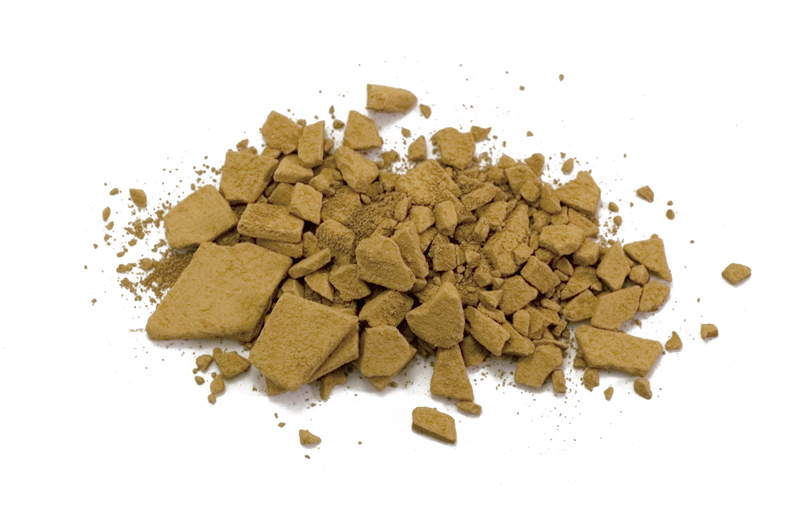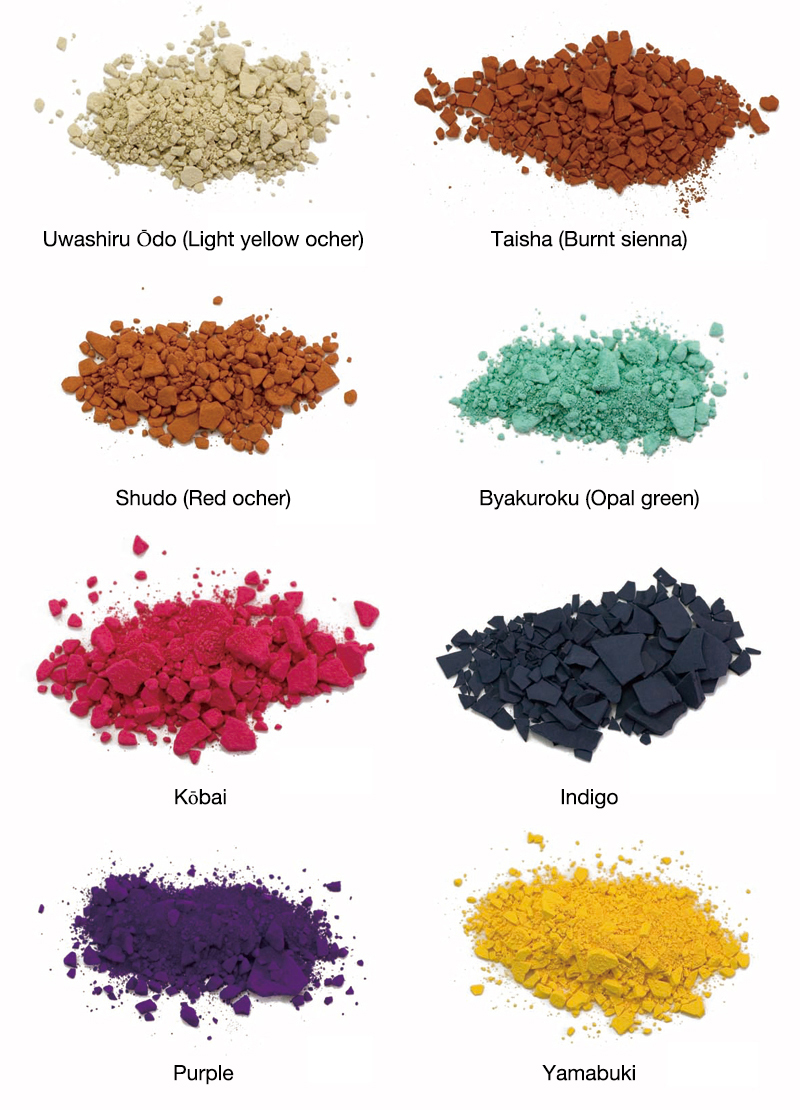Suihi-enogu (Mud Pigment)
水干絵具
Suihi-enogu
CATEGORIES
Suihi-enogu is a nihonga paint containing fine particles derived from natural mud or made by dyeing gofun or white clay. It spreads well and is characterized by the matte texture it produces. It is often sold in slabs and is ground into powder before dissolving in a medium. The pigment itself has no adhesive properties so it is fixed to the support by adding a glue solution. It is also referred to as doro-enogu (literally, mud pigment).
Natural suihi-enogu is made of mud. In particular, ochre is separated into various tones such as dark and light ochre, and even lighter tones of finer particles, through a process known as elutriation, utilizing the differences in sedimentation velocity depending on the weight of the particles. When oxidized, this becomes red ochre. Artificial suihi-enogu is made by adding natural dye, such as indigo, or a colorful chemical dye to gofun or white clay. Natural mud pigments and those made artificially with dye are two different things but they are both treated as “suihi” (dehydrated) paint because they are both refined by drying in the sun.
Suihi-enogu is inexpensive and can be spread smoothly and evenly. Therefore it is mainly used as the undercoat before applying iwa-enogu. It has the effect of smoothing out the grains on washi paper and helping the iwa-enogu applied over the top to fix. Complex tints can be produced by overlaying the paint in several coats, allowing each coat to dry before applying the next coat. Moreover, colors can be mixed relatively easily on a palette because there are no major differences in the size of the particles. It is difficult to mix the paint to a consistent texture if the glue solution is added with the pigment in its original state. Therefore, the pigment should first be ground carefully into fine powder on its own, either using a pestle and mortar, or if there is only a small amount, by placing it inside a folded piece of paper and rolling a brush over the top. Transfer this to a palette, add glue solution, knead well with the middle finger and add some more water. The paint should now be ready to use. Suihi-enogu offers better coverage than iwa-enogu, so it should be diluted sufficiently. Once mixed, suihi-enogu should not be reused if it has dried up because the quality will have deteriorated. Unlike iwa-enogu, it is not possible to remove the glue from the leftover paint. Suihi-enogu can be purchased at art supply stores that handle Japanese art supplies.
 Ōdo (Yellow ocher)
Ōdo (Yellow ocher)
 Gofun
Gofun
